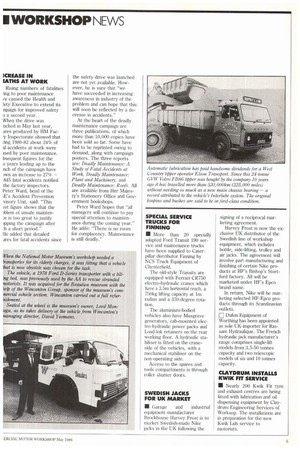!CREASE IN EATHS AT WORK Rising numbers of fatalities ing
Page 15

If you've noticed an error in this article please click here to report it so we can fix it.
to poor maintenance ire caused the Health and fety Executive to extend its npaign for improved safety o a second year.
When the drive was nched in May last year, ares produced by HM Facy Inspectorate showed that ring 1980-82 about 24% of al accidents at work were ised by poor maintenance. bsequent figures for the o years leading up to the nch of the campaign have )wn an increase to 27% — 845 fatal accidents notified the factory inspectors. Peter Ward, head of the 'Es Accident Prevention visory Unit, said: "This st figure shows that the iblem of unsafe mainten is too great to justify )pping the campaign after :h a short period."
He added that detailed lres for fatal accidents since the safety drive was launched are not yet available. However, he is sure that "we have succeeded in increasing awareness in industry of the problem and can hope that this will soon be reflected by a decrease in accidents."
At the heart of the deadly maintenance campaign are three publications, of which more than 10,000 copies have been sold so far. Some have had to be reprinted owing to demand, along with campaign posters. The three reports are: Deadly Maintenance: A Study of Fatal Accidents at Work, Deadly Maintenance: Plant and Machinery, and Deadly Maintenance: Roofs. All are available from Her Majesty's Stationery Office and Government bookshops.
Peter Ward hopes that "all managers will continue to pay special attention to maintenance during the coming year." He adds: "There is no room for complacency. Maintenance is still deadly."




















































































